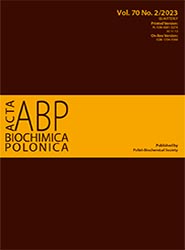Hsa_circ_0023826 protects against glaucoma by regulating miR-188-3p/MDM4 axis
Abstract
Objective: Circular RNAs (circRNAs) are characterized as a class of covalently closed circRNA transcripts and are associated with various cellular processes and neurological diseases by sponging microRNAs. The most common feature of glaucoma, a form of retinal neuropathy, is the loss of retinal ganglion cells. Although the pathogenesis of glaucoma is not fully understood, elevated intraocular pressure is undoubtedly the only proven modifiable factor in the classic glaucoma model. This study investigated the role of circ_0023826 in glaucoma-induced retinal neurodegeneration by modifying the miR-188-3p/mouse double minute 4 (MDM4) axis. Methods: The expression pattern of circ_0023826 was analyzed during retinal neurodegeneration. The effect of circ_0023826, miR-188-3p, and MDM4 on retinal neurodegeneration in vivo was assessed by visual behavioral testing and HandE staining in glaucoma rats, while that on in vitro retinal ganglion cells (RGCs) was evaluated by MTT assay, flow cytometry, Western blot, and ELISA. Bioinformatics analysis, RNA pull-down assay, luciferase reporter assay were performed to reveal the regulatory mechanism of circ_0023826-mediated retinal neurodegeneration. Results: Circ_0023826 expression was downregulated during retinal neurodegeneration. Upregulating circ_0023826 attenuated the visual impairment in rats and promoted the survival of RGCs in vitro. Circ_0023826 acted as a sponge of miR-188-3p sponge, resulting in increased expression of MDM4. MDM4 silencing or miR-188-3p upregulation reversed the protective effect of upregulated circ_0023826 on glaucoma-induced neuroretinal degeneration in vitro and in vivo. Conclusion: Overall, circ_0023826 protects against glaucoma by regulating the miR-188-3p/MDM4 axis, and targeted intervention of circ_0023826 expression is a promising therapeutic strategy for the treatment of retinal neurodegeneration.
Acta Biochimica Polonica is an OpenAccess quarterly and publishes four issues a year. All contents are distributed under the Creative Commons Attribution-ShareAlike 4.0 International (CC BY 4.0) license. Everybody may use the content following terms: Attribution — You must give appropriate credit, provide a link to the license, and indicate if changes were made. You may do so in any reasonable manner, but not in any way that suggests the licensor endorses you or your use.
Copyright for all published papers © stays with the authors.
Copyright for the journal: © Polish Biochemical Society.


